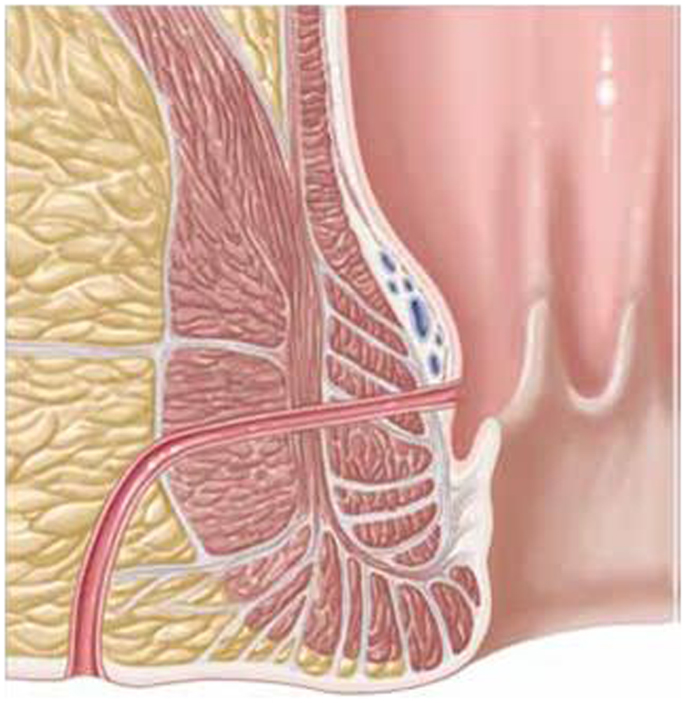
Anal fistula
An anal fistula is a small channel that develops between the end of the bowel, known as the anal canal, and the skin near the anus.
The end of the fistula can appear as a hole in the skin around the anus. The anus is the opening where waste leaves the body.
Anal fistulas are usually classed as either:
- simple or complex – depending on whether there is a single fistula tract or interlinking connections
- low or high – depending on its position and how close it is to the sphincter muscles (the rings of muscles that open and close the anus)

The common symptoms of an anal fistula include:
- skin irritation around the anus
- a throbbing, constant pain that may be worse when you sit down, move around, have a bowel movement or cough
- a discharge of pus or blood when having a bowel movement (rectal bleeding)
You should see your GP if you have any of these symptoms. You may be referred to a specialist in bowel conditions, known as a colorectal surgeon, for further investigation.
What causes an anal fistula
An anal fistula usually develops after an anal abscess (a collection of pus) bursts, or when an abscess has not been completely treated.
A fistula can also be caused by conditions that affect the intestines, such as inflammatory bowel disease (IBD) or diverticulitis.
An anal fistula affects:
- as many as 50% of people with Crohn’s disease
- up to 30% of people with HIV (a virus that attacks the body’s immune system)
- approximately 30-50% of people with an anal abscess (this is slightly more common in women than men)
Treating an anal fistula
Most anal fistulas require surgery because they rarely heal if they are not treated. Several surgical methods are available, depending on where the fistula is and whether it is classed as simple or complex.
You may be able to go home on the day of surgery. However, you may need to stay in hospital for a few days if the fistula is difficult to treat.
There is a risk of complications after anal fistula surgery, including:
- infection
- bowel incontinence
- the anal fistula coming back
For example, after the most common type of surgery for a fistula (known as a fistulotomy), the risk of an anal fistula coming back is around 21%.
The risks vary depending on the type of procedure. You can discuss this with your surgeon.
